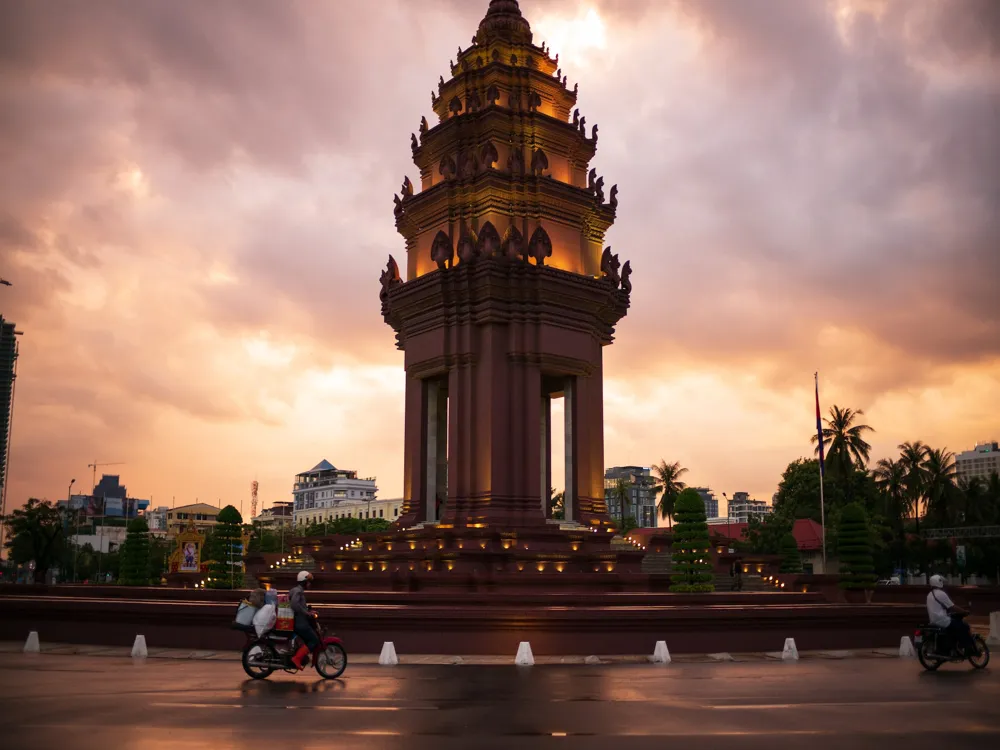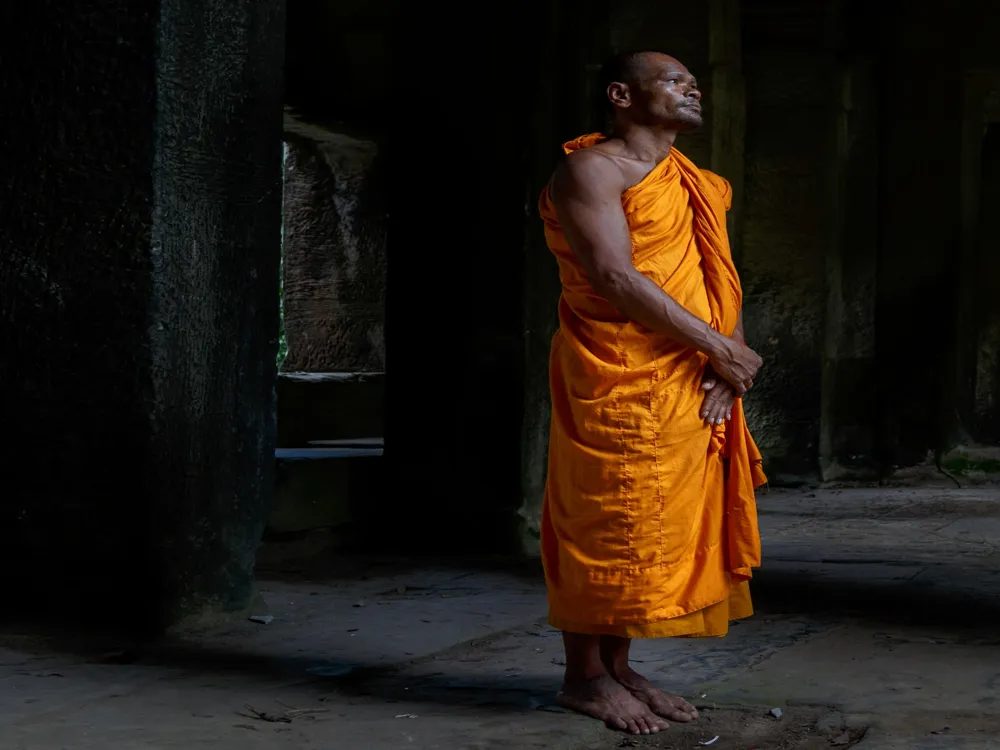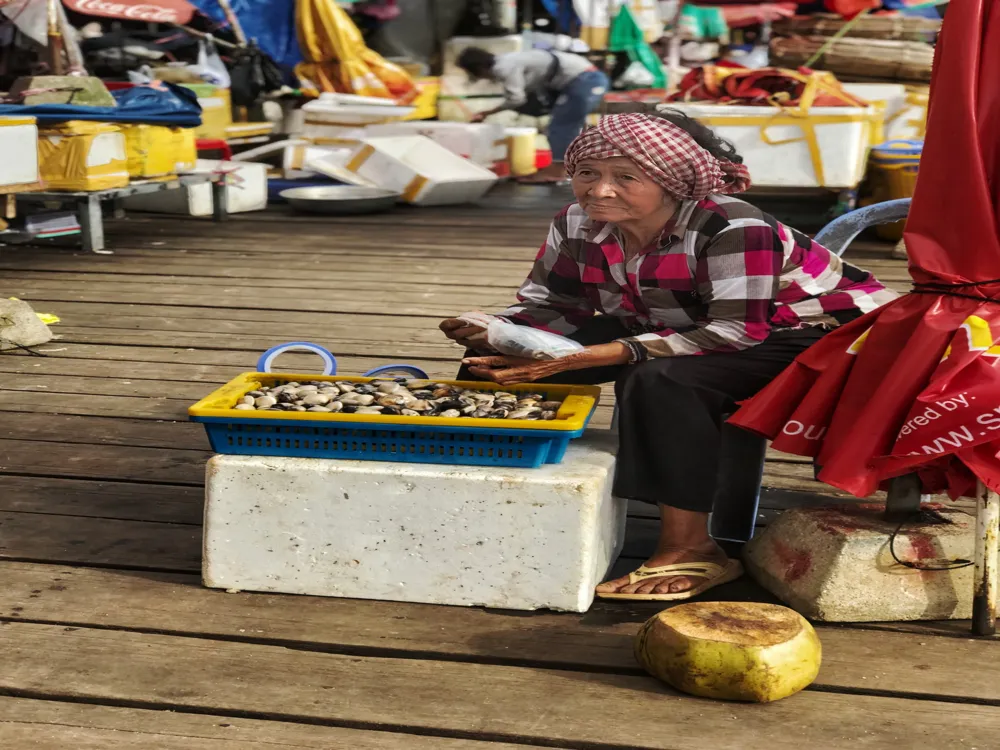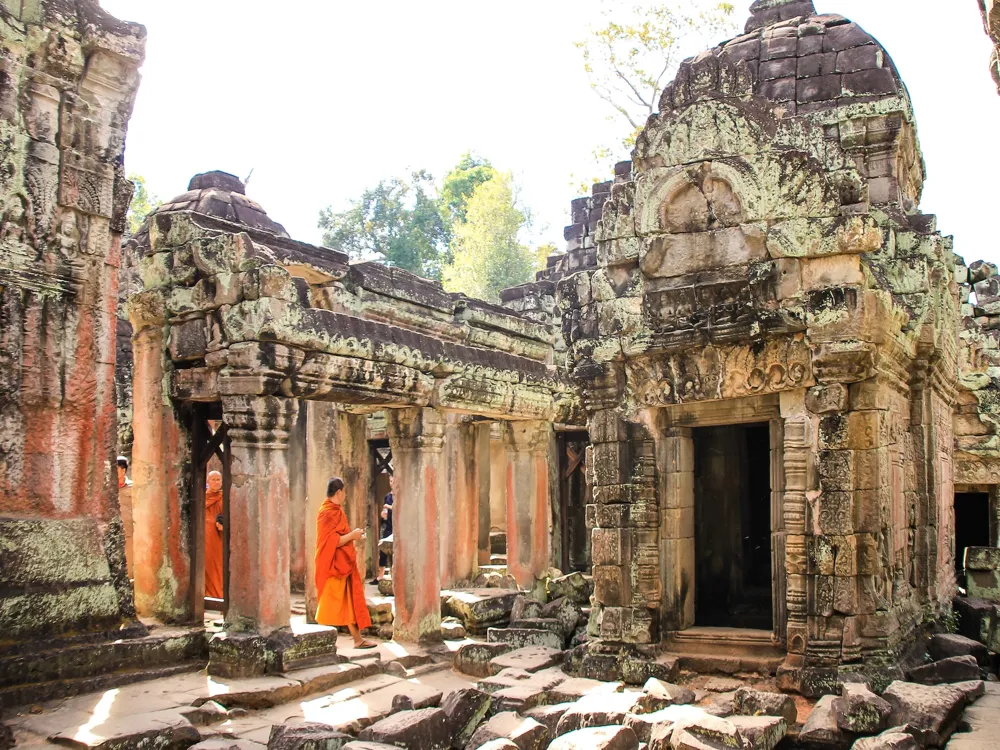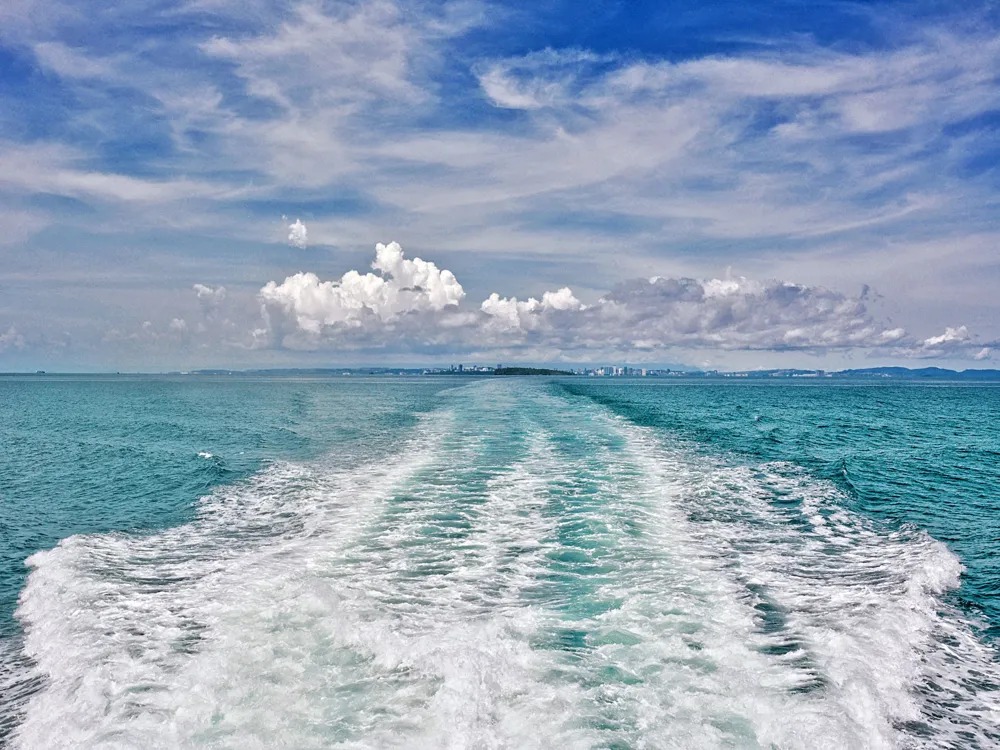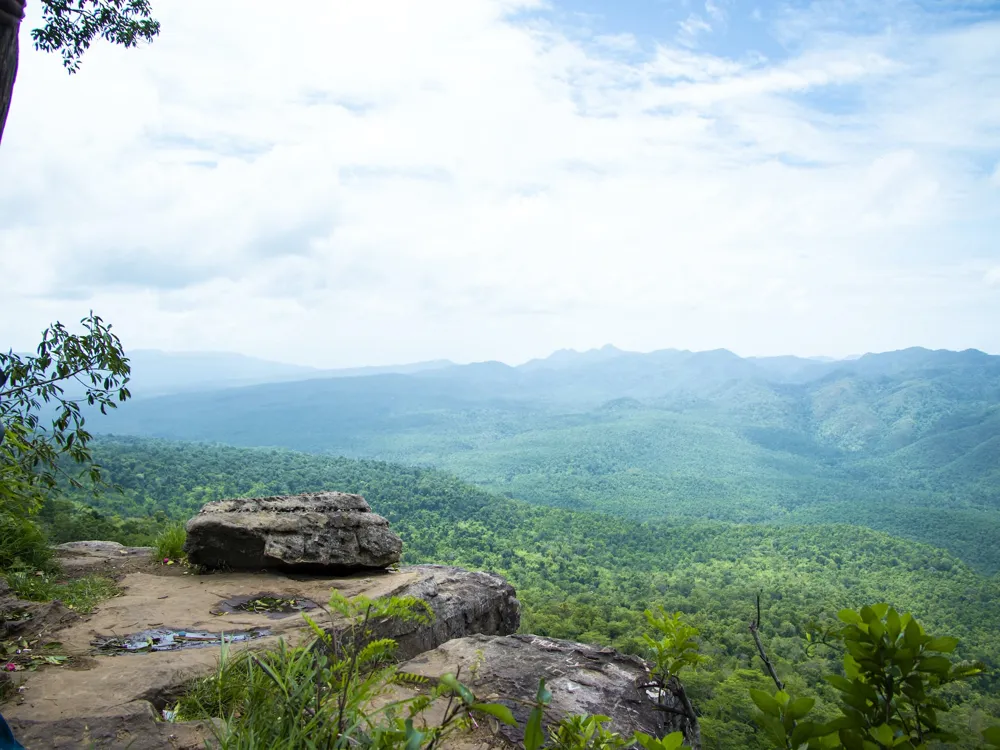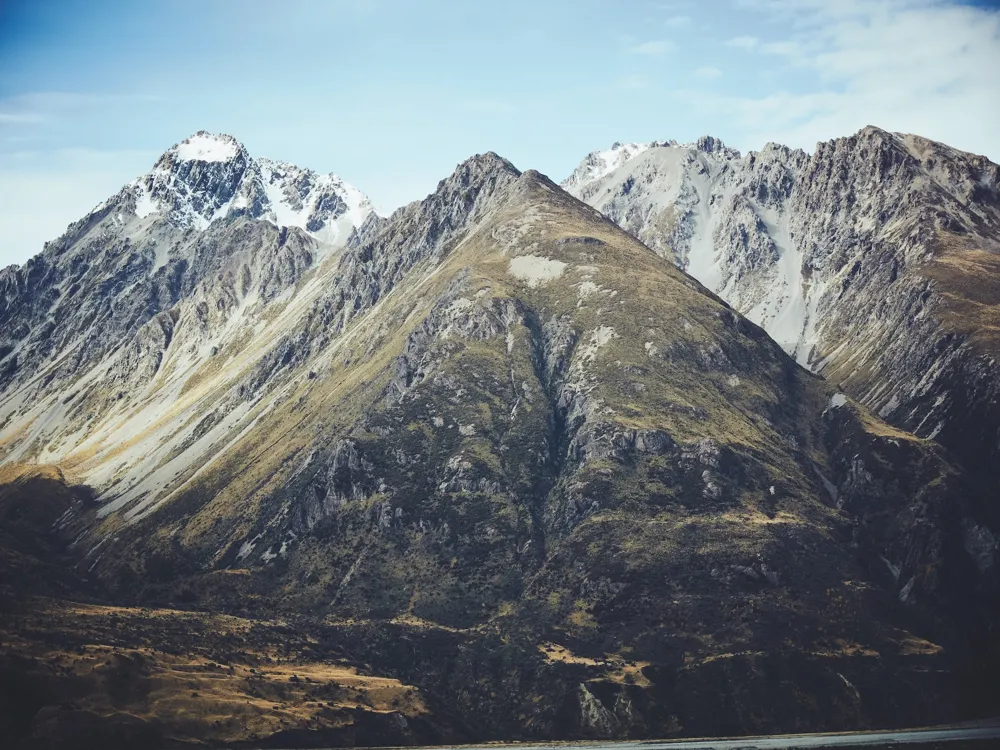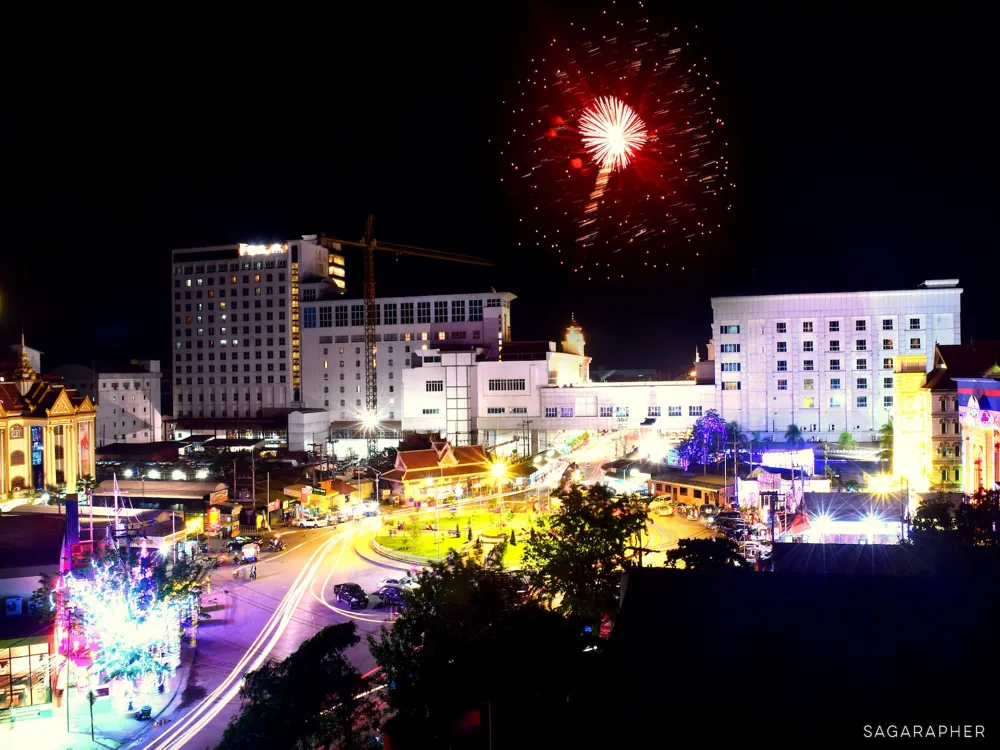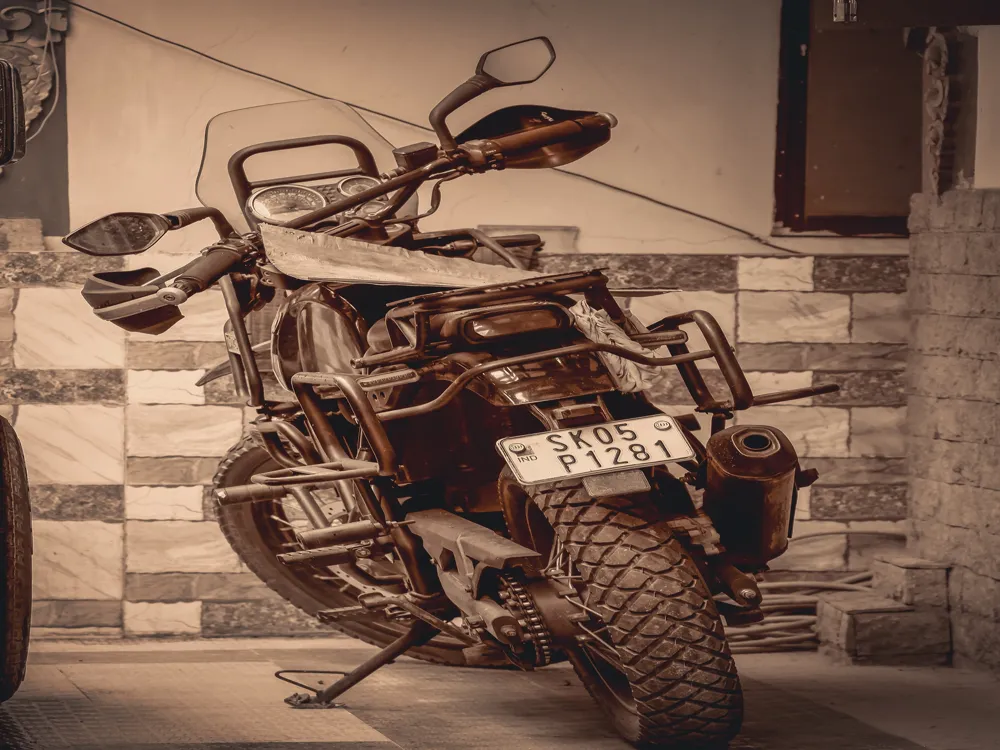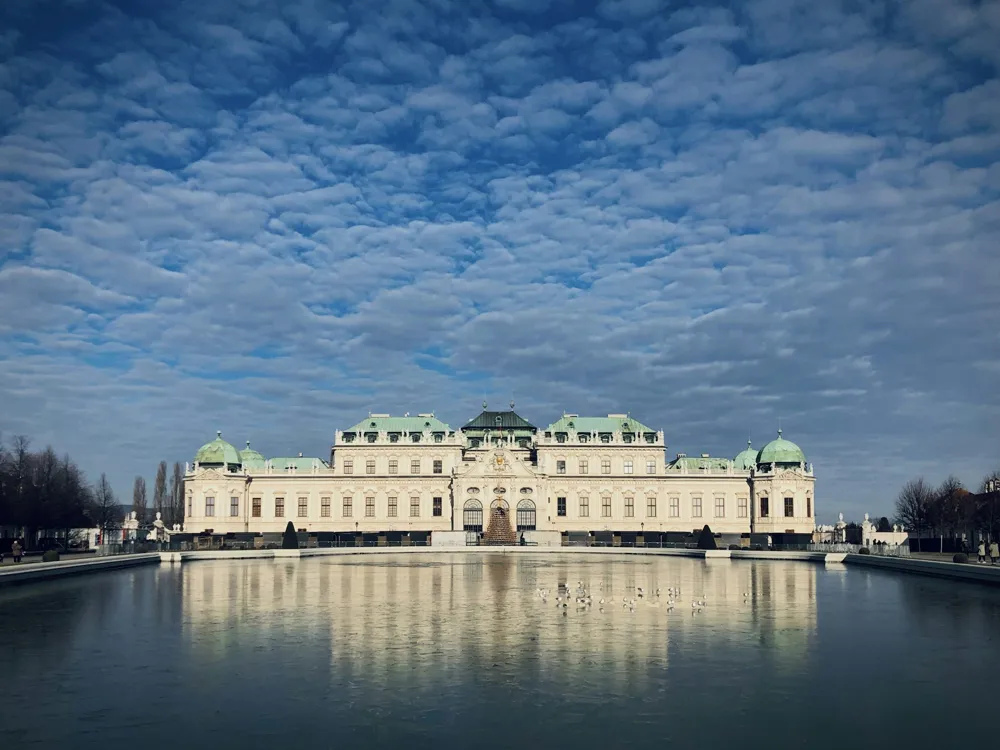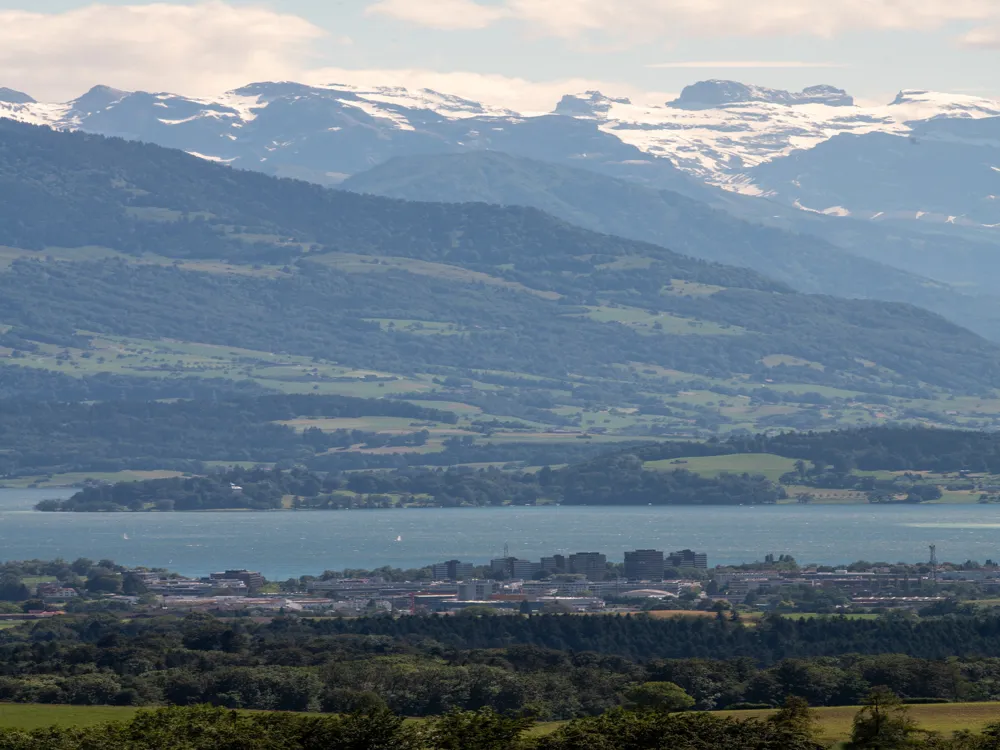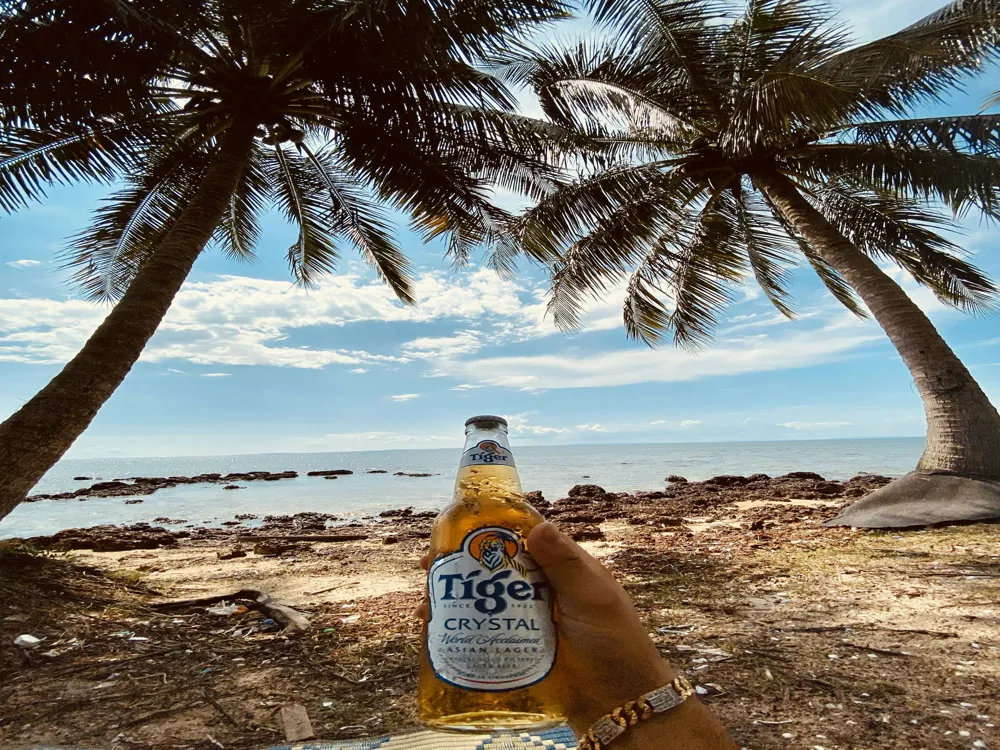The Royal Palace in Phnom Penh, Cambodia, is a spectacular architectural marvel and a symbol of the country's rich history and culture. Located at the heart of Phnom Penh, the Royal Palace has been the residence of the Kings of Cambodia since the mid-19th century. The complex is a stunning example of Khmer architecture, featuring its classic sloping roofs, ornate gilding, and traditional motifs. Constructed on the old town site, the Royal Palace was established after King Norodom relocated the royal capital from Oudong to Phnom Penh in the mid-1800s. The palace complex consists of several buildings, including the Throne Hall, the Moonlight Pavilion, the Silver Pagoda, and various other palaces and buildings used for royal ceremonies and functions. Each structure within the compound has its own unique history and significance, contributing to the overall grandeur of the palace. Visitors to the Royal Palace are often captivated by its magnificent architecture and the beautiful, serene gardens that surround it. The palace complex is not just a popular tourist destination; it's a place where the past meets the present, showcasing Cambodia's rich heritage and its ongoing journey. The architecture of the Royal Palace in Phnom Penh is a fascinating blend of traditional Khmer design and European influences, reflecting Cambodia's history and cultural diversity. The most striking features of the palace's architecture are its ornately decorated roofs, which are adorned with intricate carvings and gold gilding. The roofs, shaped in the traditional Khmer style, are designed to represent the mythological universe. One of the key architectural highlights of the Royal Palace is the Throne Hall, known as Preah Tineang Tevea Vinnichay Mohai Moha Prasat. This hall is used for coronations and official ceremonies. Its central spire is adorned with a four-faced head of Brahma, symbolizing the omnipresence of the king. The Throne Hall's interior is equally impressive, with lavish decorations, including a golden throne and mural paintings depicting scenes from the Reamker, the Khmer version of the Ramayana epic. The Silver Pagoda, another architectural marvel within the complex, stands distinct with its Italian marble staircase and floor tiles made of silver. It houses many national treasures, including gold and jeweled Buddha statues. The most notable is a life-sized gold Buddha encrusted with 9,584 diamonds. The architecture of the Silver Pagoda reflects a harmonious blend of traditional Khmer and Thai influences, a testament to the cultural exchanges in the region. The Royal Palace's architecture is not only a display of the country's artistic skills but also a reflection of its religious and philosophical beliefs. The intricate designs, motifs, and layout of the palace are deeply rooted in Hinduism and Buddhism, the two major religions that have shaped Cambodian culture and history. Visitors to the Royal Palace must adhere to a strict dress code. Shoulders and knees should be covered, and hats should be removed before entering the palace grounds. It's advisable to wear respectful, modest clothing to show reverence to this sacred site. Photography is allowed in most parts of the Royal Palace, but there are areas where it is prohibited, particularly inside some of the temples and the Throne Hall. Always look for signs indicating photography restrictions, and respect these rules during your visit. The Royal Palace is open to visitors every day, except on special royal or state occasions. The visiting hours are typically from 8:00 AM to 5:00 PM. Tickets can be purchased at the entrance, and it's advisable to check for the latest ticket prices and tour information before your visit. Consider hiring a guide for a more informative experience. Guides can provide in-depth knowledge about the palace's history, architecture, and cultural significance, enhancing your understanding and appreciation of this majestic site. The Royal Palace in Phnom Penh is easily accessible by various means of transportation. For international visitors, the nearest airport is the Phnom Penh International Airport. From the airport, you can take a taxi or tuk-tuk to reach the palace, which is located in the central part of the city along the western bank of the Tonle Sap River. For those staying in Phnom Penh, the Royal Palace is within walking distance from many hotels and guesthouses located in the city center. Public transportation, including buses and tuk-tuks, is also readily available for convenient travel to the palace. Additionally, for a more scenic route, visitors can opt for a boat ride along the Tonle Sap River, which offers a unique perspective of the palace and the city's skyline. Read More:Overview of Royal Palace Cambodia, Phnom Penh
Architecture of Royal Palace Cambodia
Tips When Visiting Royal Palace Cambodia
Dress Code
Photography Rules
Visiting Hours and Ticket Information
Guided Tours
How To Reach Royal Palace Cambodia
Royal Palace Cambodia
Phnom Penh
₹ 19,999 onwards
View phnom-penh Packages
Weather :
Tags : Forts & Palaces
Timings : 8:00 AM - 11:00 AM and 2:00 PM - 5:00 PM daily
Time Required : 2 to 3 hours
Planning a Trip? Ask Your Question
Phnom-penh Travel Packages
View All Packages For Phnom-penh
Top Hotel Collections for Phnom-penh

Private Pool

Luxury Hotels

5-Star Hotels

Pet Friendly
Top Hotels Near Phnom-penh
Other Top Ranking Places In Phnom-penh
View All Places To Visit In phnom-penh
View phnom-penh Packages
Weather :
Tags : Forts & Palaces
Timings : 8:00 AM - 11:00 AM and 2:00 PM - 5:00 PM daily
Time Required : 2 to 3 hours
Planning a Trip? Ask Your Question
Phnom-penh Travel Packages
View All Packages For Phnom-penh
Top Hotel Collections for Phnom-penh

Private Pool

Luxury Hotels

5-Star Hotels

Pet Friendly









/choeung-ek-genocidal-center-killing-fields-slider-1.webp)
